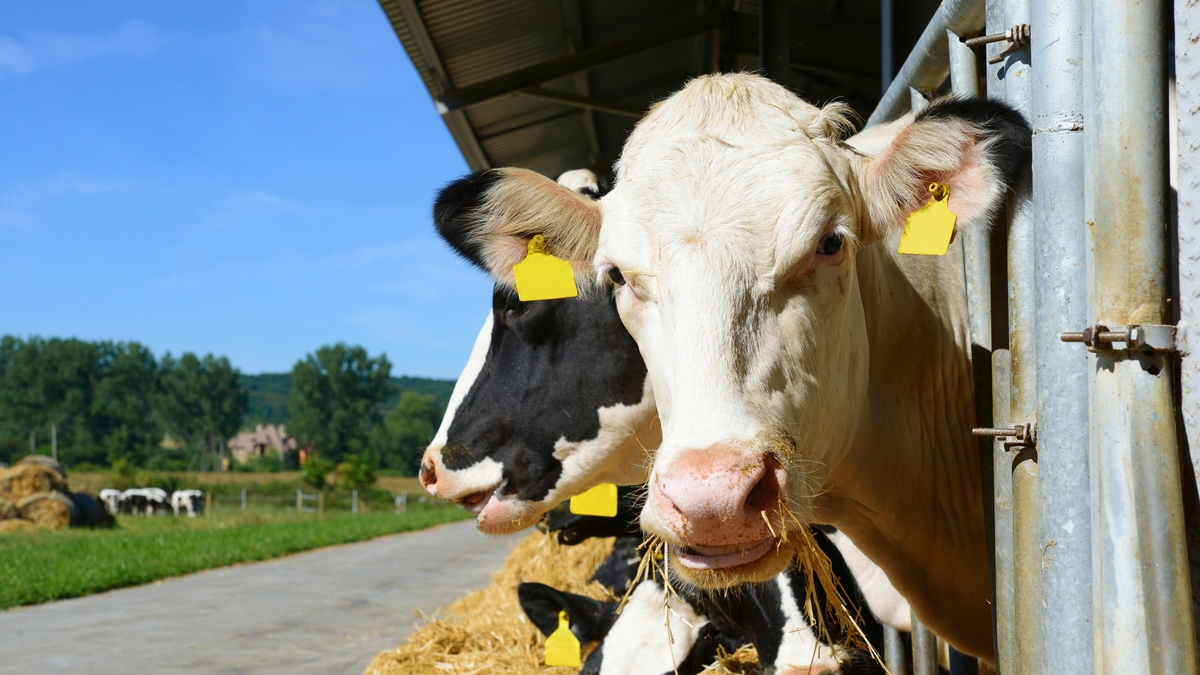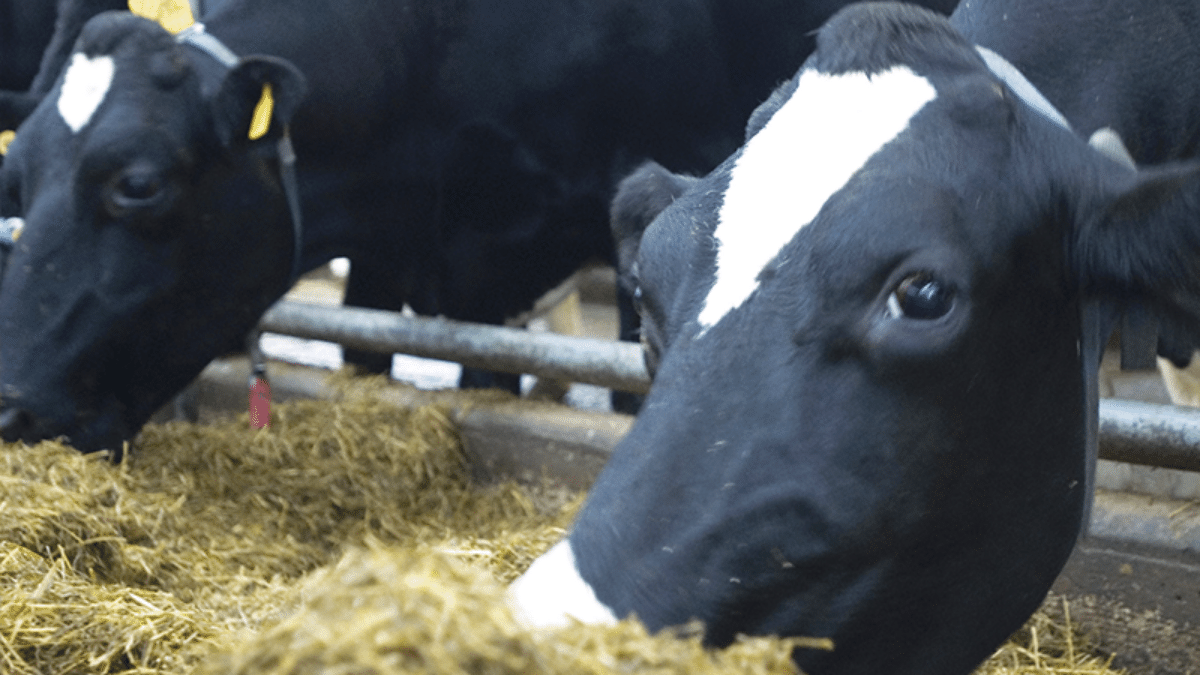Hot topic: Managing heat stress in dairy cows
The following is an edited transcript of Tom Martin's interview with Tom Lorenzen, on-farm dairy specialist with Alltech. Click below to hear the full interview:
Tom: The heat and humidity of summer can take a substantial toll on herd health and productivity. Understanding heat stress is critical for producers managing herds in warm, humid climates. Alltech’s Tom Lorenzen is an on-farm dairy specialist with a focus on dairy audits and education through milking technician schools and presentations on milk quality. He's with us to talk about nutritional approaches to the prevention of heat stress during the summer months. Thanks for being with us, Tom.
Tom L: Thank you.
Tom: First, for reference, can you define the characteristics of a heat wave?
Tom L: Well, that's a great question. The people in Wisconsin had almost 20 to 30 inches of snow this past weekend, so they’re probably not going to talk about a heat wave! But we're talking about heat stress with the dairy cow. That's when the environmental conditions are out of the optimal range for the cow, which is between 25 and 70 degrees Fahrenheit.
Tom: What factors determine when it’s severe? How do you know when it's really bad?
Tom L: Air temperature, relative humidity and air movement, solar radiation —they all affect heat stress. Under mild heat stress, we see cows breathing rapidly. As the temperature increases or the stress increases, we see the breathing rates increase in cows, too. I always say to stop, look and listen to your cows. When I watch the cows and I see that their mouths are wide open and they’re panting rapidly, you can be assured that they’re under heat stress. Cows can reduce their heat stress a little bit by sweating, but they sweat about 1 percent compared to humans.
Tom: What are the effects? What happens to the cow when they come under stress like this?
Tom L: We see cows panting and increased drooling. This reduces the amount of saliva going into the rumen, which will have a negative effect on the buffering of the rumen. This can lead to acidosis. We will see reduced feed intakes, reduced rumination and the bottom line: reduced milk yield.
Tom: Are there regions that tend to suffer more periods of heat stress than other areas?
Tom L: Yes. That’s a great question. In the United States, we're going see more heat stress with higher temperatures and humidity if you’re looking at the southeast parts of United States, including Florida, Alabama and Georgia.
Tom: What can happen to levels of milk production when this happens, especially during prolonged periods of heat stress?
Tom L: When cows suffer from heat stress, the first thing we’ll notice is reduced feed intake. They just don't go to the bunk. When we see that happen, we see reduced milk yield, as much as 8 pounds of milk per day.
Tom: Do you see effects on reproduction?
Tom L: Definitely. It affects fertility and reproduction. It leads to longer lactations or more open days. We see a compound effect where there are other health issues in regard to heat stress.
Tom: There are some obvious mechanical means of reducing heat stress: fans, sprinklers, those sorts of things. What about nutritional strategies?
Tom L: The first one I’m going to talk about is water. Water is very, very important. Water makes up about 85 percent of the content of milk. So, as the temperature goes up, so does the cow’s water requirement. Cows can drink up to 50 percent more water when the temperature and humidity index rises. Intake can go from 20 gallons to about 32 gallons of water per day when the temperature gets above 86 degrees Fahrenheit.
One of the big things I notice when I’m working with dairy is making sure the water troughs are clean and scrubbed daily in order to provide adequate water for consumption. If we can’t drink it, how can we expect the cows to drink it? We need to make sure that we provide adequate water space — 3 feet of available water for at least 10 to 15 cows is important.
Tom: Another factor in nutritional strategies would be energy. Why is it essential to increase the energy density of the diet during heat waves?
Tom L: As the temperature increases, the cows decrease their feed intake. This decrease in feed intake can result in less nutrient absorption. So, by increasing energy density of the diet, we can help maintain energy requirements. A good feed source for energy is bypass fat in the diet.
Tom: Let's move on to protein. How is protein intake influenced by heat stress?
Tom L: Like everything else, when we increase heat stress, we see less dry matter intake, which means lower protein levels during this period. This will give us a negative nitrogen balance. This leads to a dramatic decrease in milk yield, immune responses and reproduction. One way to help mitigate the decline in protein ingestion is to increase protein density in the ration as well as to make sure we provide a ruminal-digestible protein source.
Tom: I understand that during these periods of high heat, it’s really important to maintain fiber levels in the diet. It’s crucial, but there is this catch: the digestion of forages creates more heat. How should that conflict be mitigated?
Tom L: During heat stress conditions, there’s a greater risk for rumen acidosis due to slug feeding and decreased intake. To reduce this risk, maintaining fiber levels in the diet is crucial. However, forages have a higher heat increment, so the quality and degradability of the forage should be monitored. Good-quality forages that will be quickly digested in the rumen will contribute to the health of the rumen and will also help maintain milk production with a minimum impact of increased caloric diets.
Tom: And, finally, minerals. What are the roles of minerals in helping cows combat heat stress?
Tom L: As I mentioned, heat stress causes increased salivation. Saliva is one of the most important buffers that the cow creates on her own. To provide another buffer, we look at increasing sodium, potassium or magnesium to help reduce the stress during this period.
Tom: What management tips can you offer producers as they prepare for the hot summer months?
Tom L: We need to provide ample clean water at all times. Another important part is providing fans and sprinklers to help cool the cows. We also need to provide shade. One of the biggest challenges that I run into on a dairy is overcrowding. If we’re overcrowded, the cows are not going to have ample room to eat and lay down. These are all important things. Lastly, and very importantly, we want to provide some of our checks that we do during the week such as pregnancy checks, or if we’re going to move cows, or breed cows, we want to do that early in the morning to reduce cow stress.
Tom: Thank you, Tom. We appreciate your time.
Tom L: Have a great day.
Tom: Tom Lorenzen is an on-farm dairy specialist for Alltech
Click here to download a free dairy heat stress poster.
I would like to learn more about improving efficiency on my dairy.
- Read more about Hot topic: Managing heat stress in dairy cows
- Log in to post comments

Heat stress can cause health problems in dairy cows that lead to reduced productivity. Management and nutrition strategies can help dairy farmers protect the herd from heat stress during the hot summer months.













